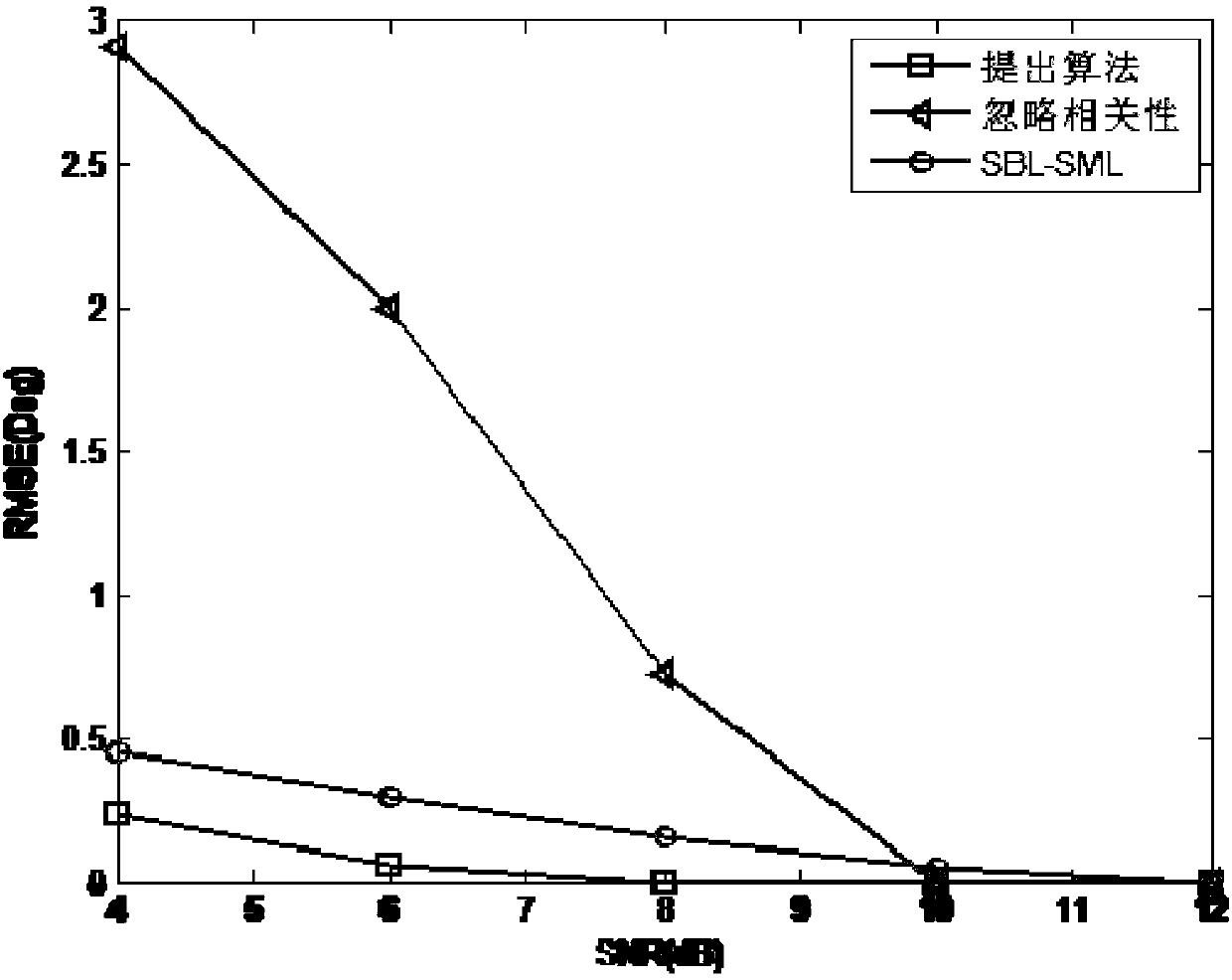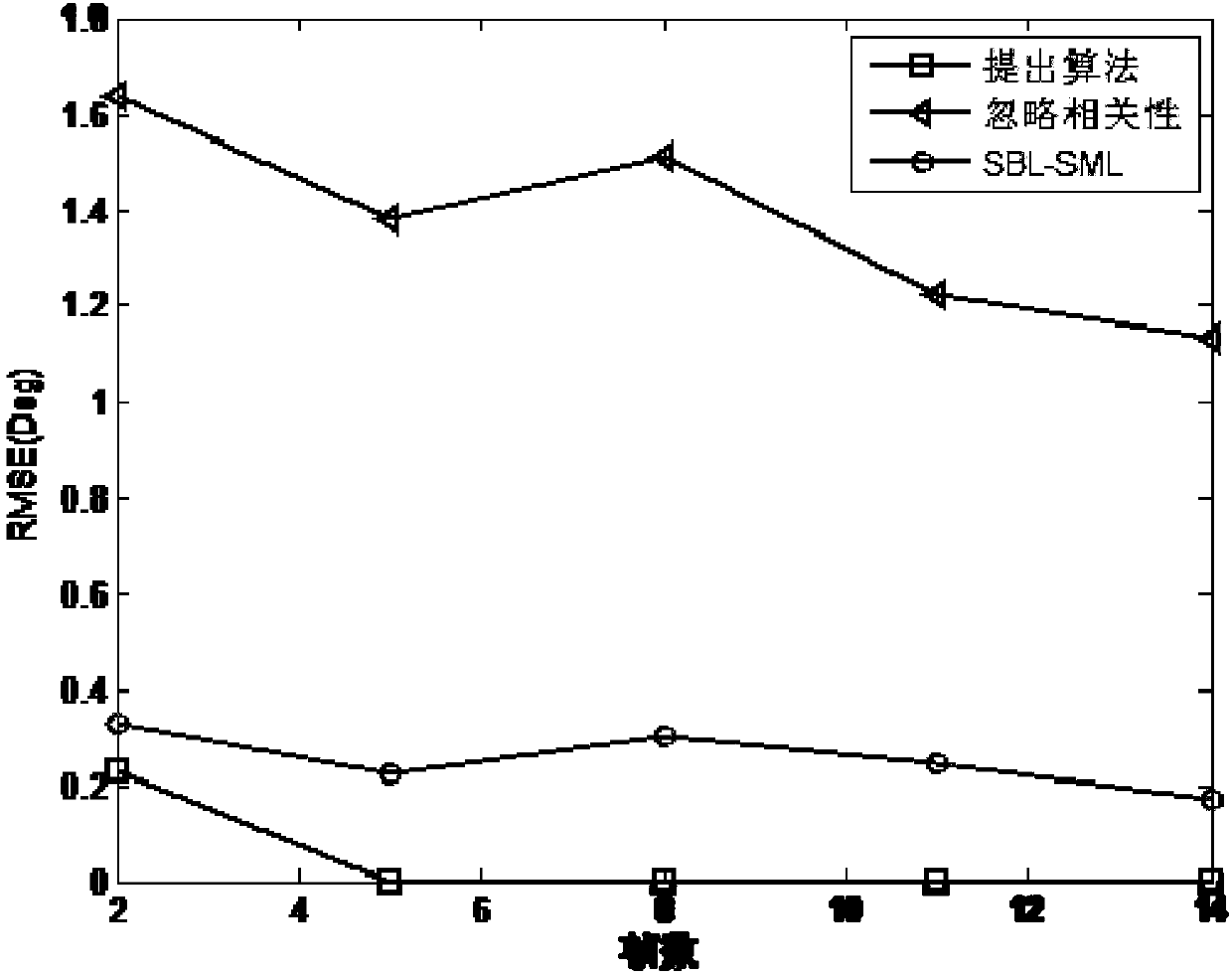Estimation method of quasi-stationary broadband array signal direction of arrival based on block sparse Bayesian learning
A technology of direction of arrival estimation and Bayesian learning, which is applied to the orientation device for determining the direction, radio wave measurement system, measurement device, etc., can solve the problems of algorithm performance degradation, poor reconstruction performance, and unsatisfactory performance, etc., to achieve The effect of low signal-to-noise ratio, low number of snapshots, and good estimation accuracy
- Summary
- Abstract
- Description
- Claims
- Application Information
AI Technical Summary
Problems solved by technology
Method used
Image
Examples
Embodiment Construction
[0033] In order to make the purpose, technical solution and advantages of the present invention clearer, the present invention will be further described in detail below in conjunction with the implementation methods and accompanying drawings.
[0034] see figure 1 , when the estimation method of the present invention is used in a uniform linear array composed of N array elements, the K directions are When performing DOA estimation on far-field broadband signals, the specific implementation steps are as follows:
[0035] Step 1. Divide the array received signal into L frames, and perform F-point discrete-time Fourier transform on each frame, then the array received signal can be expressed as
[0036]
[0037] where the direction matrix the s f,l is the Fourier transform of the signal source vector, n f,l is the Fourier transform of the Gaussian white noise vector, is the array pair The steering vector of the signal in the direction at the frequency point f, v repre...
PUM
 Login to View More
Login to View More Abstract
Description
Claims
Application Information
 Login to View More
Login to View More - R&D
- Intellectual Property
- Life Sciences
- Materials
- Tech Scout
- Unparalleled Data Quality
- Higher Quality Content
- 60% Fewer Hallucinations
Browse by: Latest US Patents, China's latest patents, Technical Efficacy Thesaurus, Application Domain, Technology Topic, Popular Technical Reports.
© 2025 PatSnap. All rights reserved.Legal|Privacy policy|Modern Slavery Act Transparency Statement|Sitemap|About US| Contact US: help@patsnap.com



